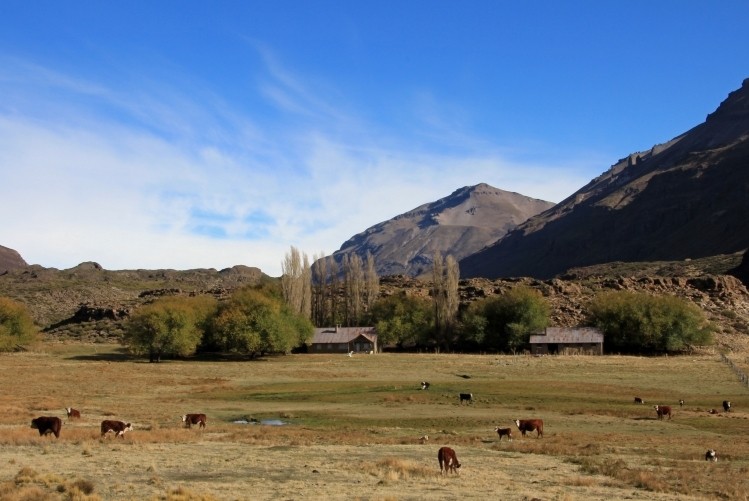Latin America update: Consumers, coronavirus and currency

The respective dairy industries of each nation are also adapting to this new reality. Despite the interregional differences, however, a few clear market trends have risen to the surface – with their impacts being felt on the dairy sector from the Rio Grande to Patagonia.
Shifting consumer habits
As consumers across the region began to heed stay-at-home guidance during March, their consumption patterns changed dramatically. Similar to what was seen in other parts of the world, foodservice demand evaporated seemingly overnight while retail purchases leapt upward. At the beginning of the lockdowns, purchases were certainly elevated, but did not come close levels of panic buying seen in the US and Europe.
Supermarket representatives compared the initial sales period as similar to that seen in the weeks leading up to a holiday. Since the early peaks, retail buying has stabilized, though it remains elevated compared to historical standards.
As consumer habits changed, so did product preferences. Demand skyrocketed for products typically consumed at home, particularly fluid milk. Ultra-High Temperature (UHT) milk, already a staple in many Latin American homes, saw additional lift as consumers sought shelf-stable options to reduce the frequency of grocery store visits. Sales of retail packed powdered milk also rose as consumers took steps to stretch household budgets as far as possible. On the other side of the spectrum, the loss of foodservice has hit cheese consumption particularly hard.
Dairy processors in the region have been scrambling to redirect raw milk toward the products consumers want, and for the most part, they have been successful. As food supply chains navigated this change, the scarcity issues seen in other parts of the world were not felt nearly as severely in Latin America. It probably helped that companies in the region, familiar with supply hiccups, have not moved as aggressively toward just-in-time inventory management as firms in, say, the US.
Furthermore, most of the large dairy companies in the region have a portfolio that includes the retail, foodservice, and bulk commodity products. This diversification has also helped them make this shift. Of course, this was not the case for artisanal dairy processors, especially those that manufacture cheese. As these small processors saw sales grind to a halt, many were unable to continue collecting milk. In less developed markets with fewer processing alternatives, farmers were forced to dump this milk or consume it on the farm.
Volatile currencies
In addition to dramatic shifts in dairy product consumption, the Latin American dairy sector has also been severely impacted by the depreciation of local currencies. During March and April, the vast majority of currencies in Latin America devalued against the US dollar. The effect was particularly severe in countries like Mexico and Colombia, which have significant interests in the hard-hit crude oil market. Some recovery was seen in May and into June but, for the most part, currencies remain well below where they were at the beginning of the pandemic.
Weak currencies can impact Latin America’s dairy sector in several ways. At the farm level, it puts upward pressure on operating costs, squeezing farmer margins. This happens because any inputs that are denominated in US dollars become relatively more expensive as the value of a producer’s local currency declines. Even though a farmer may pay for a given input in local currency, if the underlying value is tied to a globally dollar denominated market, as in the case of grains, for example, his local prices will grow up.
When currency values decline, it also makes imported goods relatively more expensive. This helps explain why we have seen many of Latin America’s major importers, especially Mexico and Brazil, drastically reduce imports in recent months. Many food processors in these countries depend on imported products, and especially milk powders, for use in their processes. As imported products become uncompetitive, the raw milk needs of these processors grow. This demand places upward price pressure on spot milk markets and is forming a chasm between the price for contracted and spot milk in parts of the region.
In the case of exporters, however, weak currencies render their goods more affordable on the global market, generally promoting additional export volumes. This dynamic should be most helpful to Argentina and Uruguay, the region’s largest dairy exporters. However, even as currency dynamics support additional shipments, these countries are finding themselves short of buyers. With Brazilian demand depressed by the same currency issue and other key markets like Russia and Algeria reeling from a combination of COVID-19 and low oil prices, Latin American dairy exports have not seen the lift that we would typically expect.
Brave new world?
COVID-19 has changed everything, and Latin America’s dairy sector is no different. The industry has had to adjust to a new reality which will continue to evolve in the coming weeks and months. Thus far, shifting consumer habits and volatile exchange rates have had a profound impact on the sector’s development.
Time will tell if these dynamics continue to play a starring role or if a different, unexpected development will take their place.
Monica Ganley is the founder of Quarterra Consulting & Advisory and the author of the Latin America Dairy Market Update. Quarterra specializes in connecting its clients with opportunities in food and agriculture in Latin America. Monica can be contacted at zbavpn.tnayrl@dhnegreen.pbz. Visit www.quarterra.com to learn more.




